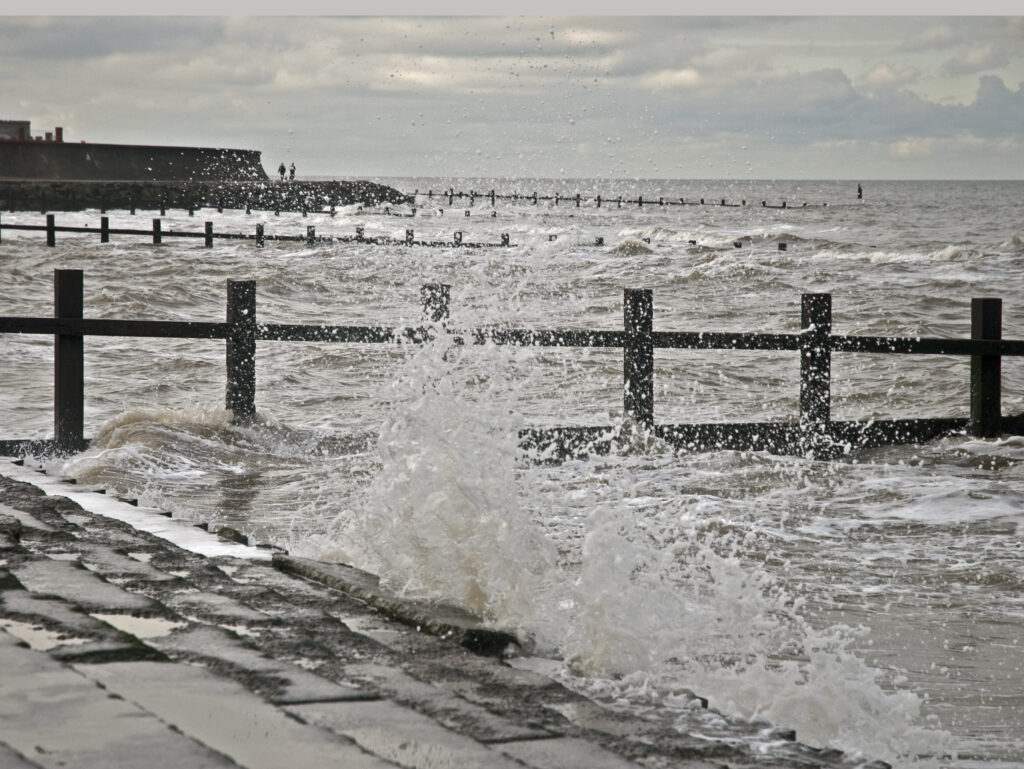Daniel Williams on a new biography of Raymond Williams, revealing how central he remains to the culture and society of 20th Century Wales
Theodor Adorno’s characteristically aphoristic statement that “the past life of the émigré is, as we know, annulled” once seemed particularly apt when considering Raymond Williams. In his fine assessment of Williams’s criticism John Higgins was typical of many in making no mention of Wales, and he compounded this omission in his Raymond Williams Reader by symptomatically mistitling Williams’s unfinished fictional exploration of the history of human settlement on his native Black Mountains as ‘People of the Black Country’.
Like many others, Fred Inglis, in his peevish biography of 1995, found it difficult to take Williams’s ‘late-come Welshness’ seriously, dismissing it as ‘a fit of the kind of fervour which overcame Williams several times in later life’. While Stefan Collini admired the way Inglis “made no pretence at writing like a visiting anthropologist”, and saw Inglis’s “emphasis on inwardness” as a legitimate reflection of the fact that biographer and subject were members of the same ‘tribe’ of intellectuals on the English left, the view from Wales was rather different. Ned Thomas, amongst others, asked rhetorically whether it mattered that Inglis’s biography “often seems to get things wrong when it talks about Wales”. The errors, argued Thomas, were not due to a “moral shortcoming” but an “objective one”:
“Colonials often know more about the metropolis than metropolitans themselves. Metropolitans perceive the colonials (if at all) in single and stereotyped terms. This is how things are. If and when Dai Smith’s biography of Raymond Williams appears, we shall expect a more comprehensive treatment, because the Welsh world and the world of the English Left will equally be open to him.”
Twelve years later, Dai Smith has produced a seminal biography. And the success of the work is partly due to the fact that the Rhondda-born, Balliol-educated Professor at Swansea University is able to analyse, sympathise, and engage, simultaneously, with the very different tribes to which Williams belonged. Raymond Williams: A Warrior’s Tale brings the ‘past life’ of the Cambridge Professor and European intellectual centre stage. The charge of Williams’s opening words in the volume of interviews Politics and Letters (1979) – “I am from Pandy” – has been registered at last, and the formative experiences on the Welsh border become, for Smith, the crucial viewfinder for bringing the later life into focus.
Dai Smith sheds new and revealing light on the people, events and commitments of Williams’s life up to the publication of The Long Revolution in 1961. His unrestricted access to the remarkably rich and revealing family papers have allowed him to use Harry Williams’s diary to explore the central relationships between father, mother and son. Interviews with the late Joy Williams, coupled with information gleaned from the Williams papers, shed new light on the development of her relationship with Raymond from courtship to marriage and onwards. Drawing on letters and interviews, there are detailed accounts, too, of Williams’s often uneasy friendships with Michael Orrom, Wolf Mankowitz, Clifford Collins and others. The chapters on the Second World War movingly document the pre-call-up fears of parents and son, Williams’s experiences as a front-line officer in an anti-tank regiment in Normandy, and the tensions between his earlier, and later, pacificism and the enduring influence of his military experiences. These accounts of people and events are consistently set within a broader social and political history in which Smith never loses sight of Williams’s shifting political allegiances from Labour to Communism to a lasting disillusion with both from the late 1940s onwards. These are the kinds of things that we would conventionally expect to find in a biography of this kind, of course, but A Warrior’s Tales is also a striking, somewhat unusual, book, both in relation to Dai Smith’s other works and in relation to biographical writing more generally.
Smith tells us in his introduction that he has “tried to tell this story, where possible, so that the voice of Raymond Williams, in his own words, can be heard”, and one of the characteristics of this biography is the extent, and length, of quoted materials. There are quoted letters and diary entries, as we might expect, but more unusual are the extensive quotations from the unpublished, and often intensely autobiographical, creative writings to which Williams dedicated most of his time form the mid 1940s to 1960. Readers familiar with the later fictional writings will be struck by the extent to which familiar scenes from the ‘Welsh Trilogy’ – Border Country (1960), Second Generation (1964), The Fight for Manod (1979) – had in fact been composed during the 1950s. The revealing conversation between Peter Owen and two representatives of the ‘West African Federation’ in Second Generation, for example, finds its precursor in the unpublished Map of Treason where a conversation concludes with the observation: “Owen? Owen is a Marxist in Africa and Asia, and a liberal in Europe. It is a common enough condition.” Indeed, what is most striking about these early fictional works are the ways in which they explore the complex nexus between class and national identity. The Welsh experience is central to those fictional meditations.
It will be far more difficult to follow Inglis in dismissing Williams’s ‘Welshness’ as a ‘late-come’ fabrication having read scenes such as the extended description of the village eisteddfod in Border Village (an earlier draft of the novel Border Country) where “everyone stood to sing the English national anthem, put at the beginning so that at the end, when they were really involved, they could sing the Welsh”. The description of the Welsh anthem conveys the strength of national belonging, coupled with the author’s sense of confused amazement at the phenomenon being observed:
“For what was final was the response, the simple collective intentness, a hushed silence that yet held all the potency of these sounds …everyone getting up, standing together, and singing the anthem. Then, within this, it seemed no longer a matter of ordinary senses, but of direct impact on the body – on the skin, on the hair, on the hands. What would anyone make of this, Will wondered, anyone looking down on it amused, if such a one could be found?”
Smith illustrates with copious quotations the constant references to Welshness and the Welsh language in the earlier unpublished novel Brynllwyd, where the central character Martin concludes a conversation with his more nationalistically inclined friend, Gwilym, by declaring that “If I am made to choose between the European tradition and the Welsh, no Celtic tourism will bring me here. The Welsh is a major part of the English tradition, not a cut-price privacy behind a string of castles”.
The later, self-defined ‘Welsh-European’ Williams would see this as a false choice. One intriguing way of thinking about his critical writings on Welshness and the national question from the 1970s onwards – collected in Who Speaks for Wales? (2003) – is as an ongoing attempt at reconciling the strands of his formative experiences and writings: Pandy and Normandy; Gwilym and Martin.
If Smith allows Raymond Williams to speak in his own range of voices, the biographer’s own voice is deliberately kept in the background. When reviewing Dai Smith’s Wales! Wales? in 1985, Raymond Williams noted the irony of the fact that while Wales was viewed by outsiders in “unusually singular terms”, cultural debates regarding language, class and identity within the nation were often “harsh and bitter quarrels”.
Among the more glaring howlers in Fred Inglis’s earlier biography was his description of Williams’s move “towards that little group of self-mocking Welsh historians led by Gwyn Williams and Dai Smith, and their sometimes comic, always serious politics in Plaid Cymru”. Putting the inappropriate adjectives to one side, Dai Smith’s historical work has in fact been dedicated to rejecting the teleological narratives and myths that, in his view, underpin the moribund nationalist politics of Plaid Cymru. Recently, he has categorically rejected the use of postcolonial models in Welsh historiography, and aligns himself with Eric Hobsbawm’s dismissive views on ‘ethno-linguistic nationalisms’. However, this challenging, confrontational voice – familiar to those who have read Smith’s key works of history and cultural criticism – is largely absent from this text. This is a measure of Dai Smith’s achievement, for the voice that stays in the mind having finished A Warrior’s Tale is that of Raymond Williams.
The decision to silence that voice in 1961, thus omitting the final 27 productive years of Williams’s life, will seem curious to many. Why conclude a biography at the moment when the subject starts to become influential? But this is a juncture that Williams recognised himself, in his introduction to The Long Revolution (1961):
“With this book and Culture and Society, and with my novel Border Country which I believe to have, in its particular and quite different way, an essential relevance to the two general books, I have completed a body of work which I set myself to do ten years ago.”
Dai Smith tells us that The Long Revolution took final form “over the autumn and winter of 1959”, and argues that Williams’s ‘ten years’ take us back beyond the 1950 essay on Ideas of Culture, to the 1949 opening exploration of his border upbringing in Brynllwyd. This time line also makes the novel Border Country the final completed work discussed in Smith’s biography, and the making of that remarkable novel brings the narrative to an apt conclusion. The importance of Williams’s fictional writings – both as a way of organising personal experience, and of relating the self to broader social and cultural movements – is the key reiterated insight of A Warrior’s Tale.
This largely fictional focus does occasionally result in less detailed and less convincing accounts of the more well-known critical writings. Culture and Society (1958) remains widely available, making the lengthy quotations from its conclusion seem unnecessary in this instance. Williams’s views of that book’s purpose and intent are largely allowed to speak for themselves and there’s little engagement with the, by now, considerable secondary literature that questions the excessively functionalist, compensatory terms of the ‘culture and society’ dualism in Williams’s career-making study.
But it is understandable, and part of this biography’s revisionist thrust, that Smith should see the “unifying again of the overlapping fluidity of a life and mind” as being manifested primarily in the novels, both published and unpublished. Williams noted that “while we may …separate out particular aspects of life and treat them as if they were self-contained it is obvious that this is only how they may be studied not how they were experienced”.
A Warrior’s Tale is a major contribution to our understanding of both the life and the mind of Raymond Williams. Through his attentive and sensitive use of the family’s papers, his understanding of the social and cultural world of the growing boy, and his essential, but not uncritical, humility in the face of the grown man’s actual achievements, Dai Smith has deftly managed to reconnect the separated ‘particular aspects’ of Raymond Williams’s life. This biography’s subject would have appreciated its author’s achievement in moving beyond the particulars, to communicate a sense of how the first half of that life was experienced.




